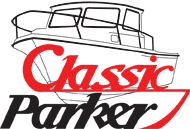I posted a reply earlier but do not see it, so you f this is redundant pls disregard.
Whole structure seems pretty solid from what you are saying and demonstrating.
If you are worried or just want peace of mind, then;
Obviously hitting stringers would be ideal, but a fishing expedition at least...
I'd pull out one of the existing screws in a non critical.ocation to see how long it is and to obtain a sense of the pullout strength and if the ply seems solid or rotted. If it's 3/4 marine ply glasses it should be fairly strong and should easily take some hefty screws or lag bolts.
I'd guess it's got adhesive if the connection is solid and it has #10 screws spaced maybe 10 -12 inch apart.
If existing seems like it can take a decent amount of torque before stripping, then one real simple easy way is simply to add a more screws especially front face and corners, if accessible. Keep it in mind that the main weakness likely us not the tensile strength of screws (unless they bend) but rather the pullout in the ply.
Other guys on this forum who pulled console to access fuel tank would know exactly how this is assembled.
Parker used #10 for a reason. If you pull out an old one and find it's pretty solid, then check if the flange of console is thru drilled or not, and just replicate what they did, but more screws. Definitely pilot drill into the ply, but on the smaller diameter side of the published range for pilot drill size for #10. You also could add some good two part epoxy when you torque the screws. If it were me, I'd maybe go to #10 torqs head or up to 1/4 to get hex head just to avoid Philips stripping and make it easy to drive with a drill head. Fender washers help but probably not needed, just use standard washers or lock washers or nothing depending on what Parker used.
I'd get out on water to get a feel for it.
My 2 cents. MB
